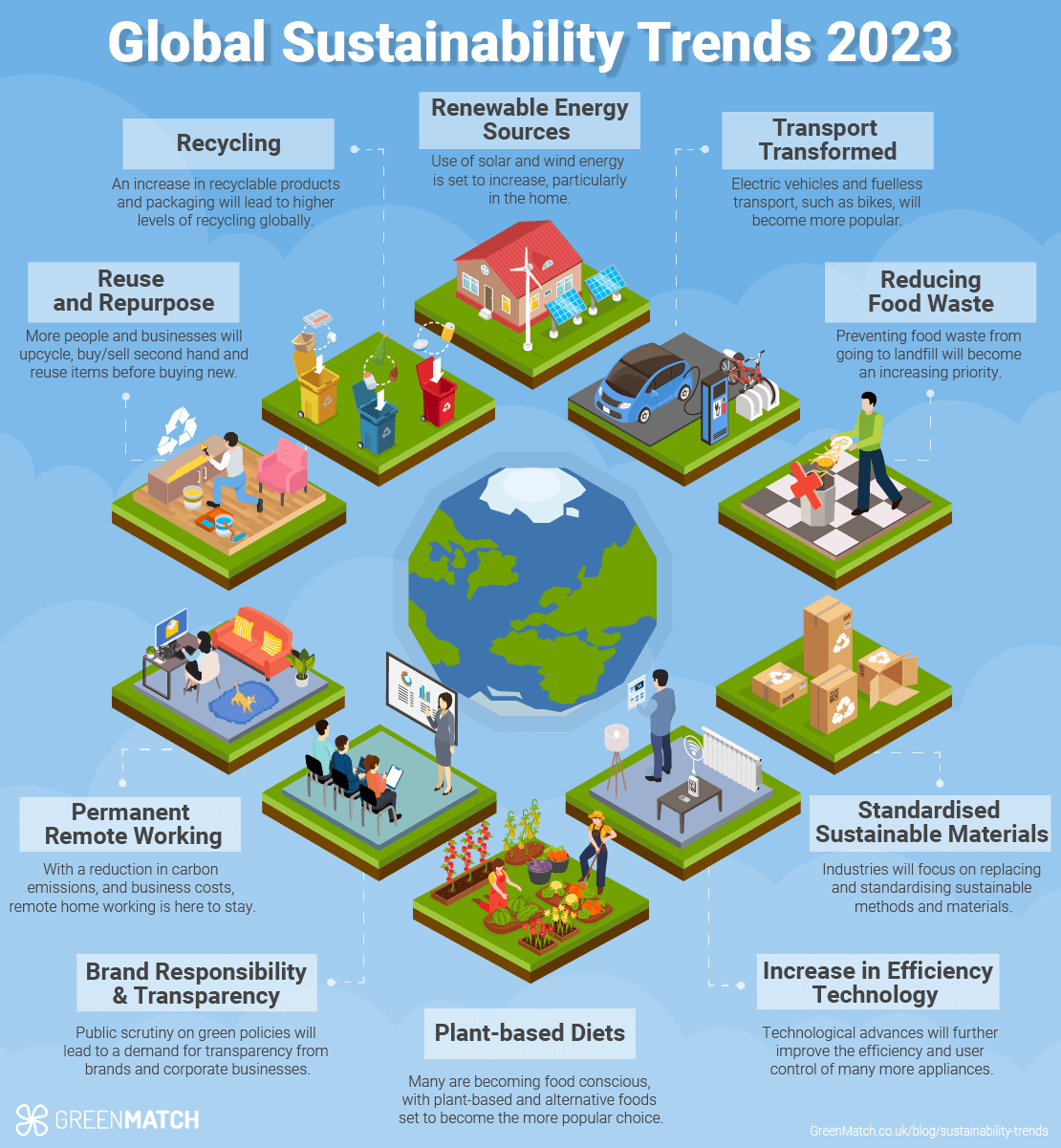https://www.facebook.com/ads/preferences/edit/
/nhttps://advertise.bingads.microsoft.com/en-us/resources/policies/personalized-ads
/nhttps://www.linkedin.com/psettings/advertising
/nhttp://www.youronlinechoices.com/uk/your-ad-choices for more information on common third party cookies used for targeted marketing.</p>\n","modalButton":"Save and close","overlayTitle":"We use cookies to give you the best browsing experience.","overlayText":"<p>We and our partners use cookies on our website to improve your browsing experience, personalize content and ads, provide social media features, and analyze our traffic. If you continue interacting we assume that you are happy to receive all cookies on this website. However, you can change your <span class=\"cookie-toggler\">cookie settings</span> at any time at the bottom of this page. Read more about our <a href=https://www.greenmatch.co.uk/"/cookie-policy/">cookie policy</a>.</p>\n","overlayButton":"Save and close"},"whyUse":{"title":"Why Use GreenMatch?"},"productGuide":{"back":"Back"},"page404":{"title":"Sorry, We Can't Find That Page","topText":"<div class=\"text shadow-container col-12 col-lg-10 col-xl-8 mb-4 p-3\">\n<p>…something went wrong or you might have followed an old link to a page that doesn’t exist anymore.</p>\n<p class=\"mt-3\">Were you looking for any of these by any chance?</p>\n<ul class=\"links\">\n<li><a href=https://www.greenmatch.co.uk/"https://www.greenmatch.co.uk/solar-energy/solar-panels/">Solar Panels</a></li>\n<li><a href=https://www.greenmatch.co.uk/"https://www.greenmatch.co.uk/heat-pumps/">Heat Pumps</a></li>\n<li><a href=https://www.greenmatch.co.uk/"https://www.greenmatch.co.uk/boilers/">Boilers/n
renewable systems</a> and new technologies, creating long-term sustainable energy consumption.</p>\n\n\n\n<p>By switching to a heat pump or installing <a title=\"Solar Panels\" href=https://www.greenmatch.co.uk/"https://www.greenmatch.co.uk/solar-energy/solar-panels/">solar panels</a>, homeowners not only significantly reduce their environmental impact but can drastically <a href=https://www.greenmatch.co.uk/"https://www.greenmatch.co.uk/blog/2020/03/how-to-save-energy-at-home/">lower their energy</a> bills. With the <a title=\"Energy Prices Europe\" href=https://www.greenmatch.co.uk/"https://www.greenmatch.co.uk/blog/energy-prices-europe/">cost of energy</a> continuing to cause uncertainty across the globe, it’s no surprise that many more people are considering making the switch.</p>\n\n\n\n<blockquote>Adam Smith, founder and CEO of <a rel=\"noopener nofollow\" href=https://www.greenmatch.co.uk/"https://www.ecoenergygeek.com//" target=\"_blank\">Eco Energy Geek</a> told us: <br>“Solar and wind energy are expected to be the most popular forms of renewable energy, due to their relatively low cost and high efficiency. […] hydroelectricity and geothermal energy are also expected to play a significant role in meeting the world’s energy needs.”</blockquote>\n\n\n\n<p>Installing a renewable system effectively creates an independent energy source to provide heat or electricity to the home. This greatly reduces the need to rely on fossil fuels to power a property. <a title=\"Heat Pump\" href=https://www.greenmatch.co.uk/"https://www.greenmatch.co.uk/heat-pumps/">Heat pumps</a>, in particular, are a great way to combat high-level carbon and <a href=https://www.greenmatch.co.uk/"https://www.greenmatch.co.uk/blog/2019/02/households-fight-greenhouse-gas-emissions/">greenhouse gas</a> emissions.</p>\n\n\n\n<blockquote>“Around 40% of global emissions come from buildings, and most of these result from the ways we heat our homes and businesses. Switching to cleaner, low-carbon options will play a critical role in tackling climate change.” <a rel=\"noopener nofollow\" href=https://www.greenmatch.co.uk/"https://www.nationalgrid.com/stories/energy-explained/how-do-heat-pumps-work/" target=\"_blank\">Nationalgrid.com</a></blockquote>\n\n\n\n<p>Given a choice to commit to 10-15 years of fossil fuel emissions by installing a standard <a href=https://www.greenmatch.co.uk/"https://www.greenmatch.co.uk/blog/2019/06/best-boiler-to-buy/">gas boiler</a> or installing a heat pump, <strong>which instantly reduces carbon emissions by around 80%</strong>, it’s a decision that will significantly impact climate change worldwide. In addition, a heat pump will operate 3 times more efficiently than a boiler, saving vast amounts of money on energy bills.</p>\n\n\n\n<p>Currently, the cost difference is between standard and <a title=\"Low Carbon Heating\" href=https://www.greenmatch.co.uk/"https://www.greenmatch.co.uk/blog/low-carbon-heating/">low-carbon heating</a> options. Still, many predict that 2024 will make those costs more comparable, increasing the desire to switch to sustainable products even further.</p>\n\n\n\n<h2>2. More Recycling</h2>\n\n\n\n<p>With frequent mentions from nearly all of our contributors, recycling was seen as one of the key trends in sustainability that we will see in 2024. Although it’s not a new concept, and many homes and businesses worldwide already do some form of recycling, it’s thought that with the global increase in environmental concern, more climate action and education towards recycling will become part of sustainability strategies.</p>\n\n\n\n<p>Manufacturers and producers will be significant contributors who will increase efforts to reduce and recycle packaging and encourage consumers to do the same. This will be seen across all sectors, from food to retail production.</p>\n\n\n\n<blockquote>Garrett Yamasaki, CEO & founder of <a rel=\"noopener nofollow\" href=https://www.greenmatch.co.uk/"https://welovedoodles.com//" target=\"_blank\">WeLoveDoodles</a>, noted that: “The retail sector is making giant efforts in terms of reducing waste […] Some examples of this are “demand planning” in which companies plan an estimated amount of purchases they will be receiving, so they create the necessary amount of packaging to avoid wasting too much.”</blockquote>\n\n\n\n<p>With increased consumer demand for their products and brands to be more environmentally conscious, it’s no surprise that big companies are making moves to improve their sustainability. With a heightened awareness of recycling practices, particularly with plastics and packaging, forecasts predict positive improvements.</p>\n\n\n\n<p>The latest report from Smithers Pira, titled ‘The Future of Recycled Packaging Markets to 2023’, forecasted that percentages of recycled content in plastic packaging will increase due to retail brands committing to use more recycled elements. They also note that as governments worldwide start setting strict recycling targets, this will become a business sustainability trend at all levels of the industry.</p>\n\n\n\n<p>Recycling is considered to be one of the key environmental considerations for countries around the world. The good news is both brands and the consumer market appear to be shifting their priorities, and influencing this change may become more rapid in the coming years.</p>\n\n\n\n<h2>3. Improved Transport and Infrastructure</h2>\n\n\n\n<p>This industry trend has steadily evolved for most countries, with improvements to sustainable transport options. Amongst the changes include increased bicycle use, low-carbon public transport and the rollout of electric cars and other vehicles.</p>\n\n\n\n<p>Whilst some countries may be adopting energy-efficient electric vehicles more quickly than others, there is no doubt that these once seemingly futuristic modes of transport are now becoming commonplace on the roads and highways of the world.</p>\n\n\n\n<p>Many of those we spoke to saw the importance of more climate-positive, sustainable transport, which will be a big part of everyday life in the coming year.</p>\n\n\n\n<blockquote>Adam from <a rel=\"noopener nofollow\" href=https://www.greenmatch.co.uk/"https://www.ecoenergygeek.com//" target=\"_blank\">Eco Energy Geek</a> analysed that: “There is a growing trend of sustainable transportation options being adopted by municipalities and private companies. This is due to […] increasing awareness of the environmental impact of traditional transportation methods, the high cost of fuel, and the availability of more sustainable options.”</blockquote>\n\n\n\n<p>When looking at the factors which impact and arise from fossil-fuelled transport, it’s no surprise that this is an area of concern. <a href=https://www.greenmatch.co.uk/"https://www.statista.com/statistics/1185535/transport-carbon-dioxide-emissions-breakdown//" target=\"_blank\" rel=\"noopener\">In 2020</a>, <strong>passenger vehicles accounted for 41% of all the world’s CO2 transport emissions</strong>. That’s more than any other mode of transport.</p>\n\n\n\n<p>The positive news is that action is already being taken to reduce the harmful impact of road vehicles. Aside from adopting electric cars, buses and vans, there is also an effort across <a title=\"Greenest Countries\" href=https://www.greenmatch.co.uk/"https://www.greenmatch.co.uk/blog/greenest-countries/">green countries</a> to encourage more use of public transport or bikes. Across Europe, <a href=https://www.greenmatch.co.uk/"https://www.cntraveler.com/story/free-public-transport-is-a-growing-trend-in-europe/" target=\"_blank\" rel=\"noopener\">many cities have increased efforts</a> to reduce car use by making public transport accessible. This includes Malta, Luxembourg, Spain and many more.</p>\n\n\n\n<p><a data-anchor=\"?via%3Dihub\" href=https://www.greenmatch.co.uk/"https://www.sciencedirect.com/science/article/pii/S1361920921000687?via%3Dihub\%22 target=\"_blank\" rel=\"noopener\">Research</a> from the University of Oxford also shows that using a bike over a car just once a day can reduce a person’s carbon emissions by 67%. This shows that even if every car trip couldn’t be substituted, the potential to decrease emissions is still very high.</p>\n\n\n\n<p>It’s clear that transport is already an area that most countries are trying to improve, but with increased efforts, we can expect to see even more developments in this eco-trend throughout 2024.</p>\n\n\n\n<h2>4. Reduction of Food Waste</h2>\n\n\n\n<p>Food waste has become a growing concern across the globe over the last decade. According to recent research by <a href=https://www.greenmatch.co.uk/"https://www.unep.org/resources/report/sustainable-food-cold-chains-opportunities-challenges-and-way-forward/" target=\"_blank\" rel=\"noopener\">UNEP</a>, around one-third of all food produced for human consumption worldwide each year goes to waste. That’s around 1.3 billion tonnes which go straight to landfills. The impact of that quantity of waste is multi-layered – from its effect on soil and water quality to producing hazardous odours and toxic chemicals, not to mention increasing the need for more landfill sites.</p>\n\n\n\n<p>So, it’s not a surprise that our industry experts predict that reducing food waste will be high on the sustainability agenda for all countries. One of the biggest trends that was highlighted was the act of composting, something which both businesses and consumers can do.</p>\n\n\n\n<blockquote>Nikole Pearson, of <a rel=\"noopener nofollow\" href=https://www.greenmatch.co.uk/"https://nikolepearson.com//" target=\"_blank\">nikolepearson.com</a>, shared with us their insights on composting: “When thrown into landfill, organic waste releases methane, a potent greenhouse gas. But, when allowed to decompose naturally, organic waste becomes compost which releases 50% fewer emissions. […] Today’s composters are stylish, odor free, and electric. [They] speed up the process and can break down waste within hours instead of weeks. […] As companies release more environmentally friendly models and models that can break down compostable plastics, expect electric composters to be a 2024 trend.”</blockquote>\n\n\n\n<p>It is reported that around <strong>72% of waste</strong> that reaches landfills <strong>could be composted instead</strong>. As priorities change, however, it is thought that more pressure will be put on big businesses and households to compost. Some states in America, for example, are already enforcing composting laws. Oregon and Washington now legally require all businesses to compost their organic waste.</p>\n\n\n\n<p>With food waste being a significant global issue and composting being a relatively easy, sustainable solution, this trend is being pushed for all the right reasons.</p>\n\n\n\n<h2>5. Reuse and Purchasing Second-hand Products</h2>\n\n\n\n<p>The increase in second-hand purchasing and reuse of products and materials has been steadily growing in popularity. Not only because it drastically reduces the environmental impact of new product manufacture, supply chains and delivery, but it also cuts down spending costs for millions of consumers. This is a concern which is of enormous importance in the current climate.</p>\n\n\n\n<p>The benefit of this sustainable future trend is that it can apply to many different products, from clothing and packaging to furniture and materials. One of the industry professionals, Max from <a href=https://www.greenmatch.co.uk/"https://survivalgearshack.com//" target=\"_blank\" rel=\"noopener nofollow\">SurvivalGearShack.com</a>, commented:</p>\n\n\n\n<blockquote>“We can drastically reduce our carbon footprint by consuming fewer goods and purchasing them more intentionally. Buying new items will require consumers to turn to secondhand resources. The saying ‘vintage never goes out of style’ is true for a reason. Vintage furniture will be restored rather than purchased new. This way, families will be able to pass down pieces from generation to generation.”</blockquote>\n\n\n\n<p>The second-hand<a href=https://www.greenmatch.co.uk/"https://www.futuremarketinsights.com/reports/secondhand-apparel-market/" target=\"_blank\" rel=\"noopener nofollow\"> clothing market will</a><strong> be worth over $282 million by 2032</strong>. This desire to buy second-hand fashion is driven by a consumer base that wants to reduce pollution, climate change, and unethical labour practices. There is also a greater need for short-term reduced spending amongst younger generations facing more financial uncertainty, as it is reported that <a href=https://www.greenmatch.co.uk/"https://www.statista.com/statistics/828034/willingness-to-buy-secondhand-items-by-age-worldwide//" target=\"_blank\" rel=\"noopener\">42% of those shopping</a> second-hand are within the 18-37 age range.</p>\n\n\n\n<blockquote>“Secondhand Is Becoming a Global Phenomenon, Expected To Grow 127% by 2026” <a rel=\"noopener nofollow\" href=https://www.greenmatch.co.uk/"https://www.thredup.com//" target=\"_blank\">ThredUp.com</a></blockquote>\n\n\n\n<p>With an ever-increasing, <a href=https://www.greenmatch.co.uk/"https://www.greenmatch.co.uk/blog/how-to-be-more-eco-friendly/">environmentally conscious</a> consumer base, we can expect the reuse and repurposing of products to become a more popular option. From 2024, we may see more second-hand, vintage and repurposing brands becoming central to how we shop.</p>\n\n\n\n<h2>6. More Sustainable Materials</h2>\n\n\n\n<p>We know that <a title=\"Fast Fashion: The Second Largest Polluter in The World\" href=https://www.greenmatch.co.uk/"https://www.greenmatch.co.uk/blog/2016/08/fast-fashion-the-second-largest-polluter-in-the-world/">sustainable fashion</a> is high on our trend predictions for 2024, but what also featured in our research was the increased use of sustainable materials. This includes swapping packaging materials, clothing fibres, and construction materials for more sustainable natural resource options. This can mean readily biodegradable or replaceable materials with minimal environmental impact.</p>\n\n\n\n<p>Many of our contributors highlighted changes in this area as the future of sustainability. There are many examples of ways researchers and manufacturers are trialling solutions to reduce or eliminate environmental impact. For example, there is a move towards using bamboo rather than single-use plastics in packaging. In the fashion industry, bamboo, hemp, and organic cotton are becoming more frequent choices for manufacturers.</p>\n\n\n\n<p>There is also a move towards similar materials within the home.</p>\n\n\n\n<blockquote>Ilam Padmanabhan, founder of <a rel=\"noopener nofollow\" href=https://www.greenmatch.co.uk/"https://ilampadman.com//" target=\"_blank\">Ilampadman.com</a>, told us: From 2024, “there is expected to be an increased demand for sustainable home building materials […] bamboo, wool and cork are becoming increasingly popular as they are environmentally friendly, durable and stylish. Additionally, sustainable home building materials often have health benefits, as they can improve indoor air quality and provide thermal insulation.”</blockquote>\n\n\n\n<p>One climate trend which seems to be appearing more frequently in materials is the use of bamboo. This versatile product is becoming the top choice within many sectors and a sustainable future product. Its benefits are numerous, whether it’s used as a fibre or flooring. Bamboo releases more oxygen and absorbs four times as much carbon dioxide in place of wood. It’s strong, water resistant and cheaper to produce.</p>\n\n\n\n<p>It’s undoubtedly clear that new and alternative materials are beginning to make their way into the mainstream across every sector. From next year, we may well see more uses for these materials and the introduction of new ones.</p>\n\n\n\n<h2>7. Increased Brand Responsibility & Transparency</h2>\n\n\n\n<p>Many of those we spoke to predicted that brands and big businesses would be under increasing pressure to focus on their environmental responsibilities and be more transparent for consumers.</p>\n\n\n\n<blockquote>Alan Duncan, Founder of <a rel=\"noopener nofollow\" href=https://www.greenmatch.co.uk/"https://www.solarpanelsnetwork.com//" target=\"_blank\">Solar Panels Network</a>, noted that: “businesses are facing a growing need to adapt their operations to address climate issues. Many companies are turning to measures like increasing their use of renewable energy and using more sustainable materials in their products to mitigate these risks and remain competitive in the long term. […] Future contracts will be won or lost based on a company’s green credentials, so businesses must take action now.”</blockquote>\n\n\n\n<p>Brand loyalties may be tested as consumers demand more from corporations to see their efforts and understand how they tackle their climate impact. If big brands can’t show they are taking action to tackle climate change and committing to sustainable industry practices, consumers may look elsewhere for their products.</p>\n\n\n\n<p>For brands to do their part and stay competitive, they must adapt to the new environmentally conscious consumer. This might include switching to recycled materials and recyclable products and investing in more comprehensive initiatives that support climate change education or carbon offsetting measures. It could include only working with other sustainable businesses or launching a sustainability strategy.</p>\n\n\n\n<blockquote>Grace Baena, Director of Brand at <a rel=\"noopener nofollow\" href=https://www.greenmatch.co.uk/"https://kaiyo.com//" target=\"_blank\">Kaiyo</a>, a pre-owned furniture store, highlights the importance of transparency in this area: “As sustainability becomes something consumers and the market are more mindful of, brands may outwardly espouse these types of values, while failing to actually uphold them. So, I can see a trend arising of consumers being more suspicious of non-specific sustainability pledges.”</blockquote>\n\n\n\n<p>There may be two sides to this trend – on the one hand, we may see brands making big claims about their sustainability efforts, but on the other, we will need to stay diligent and sceptical about their delivery. Brand transparency will become a crucial part of how the consumer market moves forward in the coming years, keeping customers loyal and allowing brands to present and uphold an ethical and responsible reputation.</p>\n\n\n\n<h2>8. Even Greater, Climate-Positive Technology</h2>\n\n\n\n<p>In a world where new technology seems to appear daily, it’s no surprise that predictions include even bigger and better technology to <a href=https://www.greenmatch.co.uk/"https://www.greenmatch.co.uk/blog/2021/02/renewable-path-to-net-zero-emissions/">target climate change</a> and support sustainability in the years ahead. More frequent use of existing and new systems seems to create opportunities to reduce our global and individual environmental impact.</p>\n\n\n\n<blockquote>Alan Duncan, expert in green and renewable energy and Founder of Solar Panels Network, told us that from 2024 he expects more use of “green technologies like electric cars, smart thermostats, and energy-efficient appliances” and believes that: “The impact on households will be particularly significant, as consumers seek out products that are not only more environmentally friendly but also help them save money on their energy bills.”</blockquote>\n\n\n\n<p>We are already seeing more use of smart thermostats and electric vehicles, but whereas in previous years, these have been seen as a device to help people reduce their carbon footprint, the current financial climate and economic uncertainty now suggest these are more likely tools for saving money.</p>\n\n\n\n<p>It is thought that most countries across the globe have increased their <a title=\"How To Save Energy at Home\" href=https://www.greenmatch.co.uk/"https://www.greenmatch.co.uk/blog/2020/03/how-to-save-energy-at-home/">use of smart thermostats</a> in recent years. According to a recent survey by Statista, the uptake rate across the EU alone has spiked from 8 million homes in 2018 to an estimated 22 million in 2020.</p>\n\n\n\n<p>While these smart gadgets help give consumers more control over how they use energy, they won’t be the only thing helping to reduce energy waste in homes. In 2023, we saw more of our standard <a title=\"Most Energy Consuming Appliances\" href=https://www.greenmatch.co.uk/"https://www.greenmatch.co.uk/blog/most-energy-consuming-appliances/">household appliances will be energy efficient</a>, from ‘smart’ ovens to fridges and dishwashers that can be more flexibly controlled and will have the lowest energy consumption possible.</p>\n\n\n\n<p>All of this clever technology won’t just support households but will also exist to support businesses. For example, cloud storage and video conferencing may seem like simple technologies compared to electric vehicles. They could be one of our greatest weapons against climate change, as they allow people to work remotely (which brings us to our next trend!).</p>\n\n\n\n<h2>9. More People Working from Home</h2>\n\n\n\n<p>Since the pandemic’s start, employees working from home have rapidly become a more regular occurrence for most businesses. The benefits of this working style are so numerous that even after the pandemic, businesses worldwide are still adopting the practice.</p>\n\n\n\n<p>Many of our contributors claim that in 2024, this low-carbon trend will continue. Whether you’re a fan of home working or not, it’s undeniable that staying home has environmental benefits.</p>\n\n\n\n<p>[Working from home] reduces greenhouse gas emissions by an amount of <strong>600,000 cars</strong> (U.S)(State of Telecommuting)</p>\n\n\n\n<p>As more people work from home, there is less road travel by car and public transport, which has led to a huge reduction in carbon emissions. Additionally, as technology allows more people to communicate and store information remotely, energy consumption in office buildings has also reduced.</p>\n\n\n\n<blockquote>Tom Miller, a Director of Marketing at <a rel=\"noopener nofollow\" href=https://www.greenmatch.co.uk/"https://fitnessvolt.com//" target=\"_blank\">FitnessVolt</a>, has noticed: “Working from home has several environmental benefits, but perhaps most critically, it keeps millions of vehicles off the road. Many customers […] follow this identical strategy, as do we ourselves […]. If work-from-home (WFH) or hybrid arrangements will help your team, you should give them a try to boost your organization’s environmental credibility.”</blockquote>\n\n\n\n<p>One of the positive benefits of this practice is that it also encourages a better work-life balance. This allowed many companies to improve their environmental contribution and employer appeal.</p>\n\n\n\n<p>A recent report showed that by 2028, <strong>73% of all teams are expected to have remote workers</strong> (<a href=https://www.greenmatch.co.uk/"https://www.upwork.com/press/releases/third-annual-future-workforce-report/" target=\"_blank\" rel=\"noopener nofollow\">Upwork</a>). This prediction goes a long way to confirm that working from home is here to stay and that, by default, environmental impact will continue to fall in this area.</p>\n\n\n\n<h2>10. More Demand for Plant-based and ‘Alternative’ Foods</h2>\n\n\n\n<p>A <a data-anchor=\"?cookieSet=1\" href=https://www.greenmatch.co.uk/"https://www.science.org/doi/full/10.1126/science.aaq0216?cookieSet=1\%22 target=\"_blank\" rel=\"noopener\">recent study</a> by the University of Oxford has shown that people can reduce their carbon footprint by up to 73% by not eating meat or dairy products. That’s an incredible reduction, and it’s clear why more people are turning towards a vegan diet. This is one trend in sustainability that most of our contributors noted would be increasing throughout 2024.</p>\n\n\n\n<p>Reasons for adopting a plant-based diet go beyond just carbon reduction and health benefits. There is also a dramatic impact on the planet to consider. With farming practices, meat production can deplete natural resources, contaminate land and endanger other wildlife.</p>\n\n\n\n<p>There is good news if you do not like traditional plant-based foods. You can still contribute to these efforts by <strong>choosing ‘alternative’ foods</strong>.</p>\n\n\n\n<blockquote>Justin Levitt, from sustainable manufacturer <a rel=\"noopener nofollow\" href=https://www.greenmatch.co.uk/"https://making.com//" target=\"_blank\">Making.com</a>, explains: “when it comes to food production, the world is moving very quickly towards alternative sources of meat, protein and dairy. The trend we’re seeing in this environment is not just to make a substitute but to make the substitute as close to the “real thing” as possible.”</blockquote>\n\n\n\n<p>Production of ‘alternative’ foods is taking off and is something we can all expect to see more of. ‘Fake’ versions of meat and cheese are becoming increasingly common on supermarket shelves and restaurant menus. The demand for more sustainable food options creates more expansive opportunities for food manufacturers and consumers. It’s no surprise, though, when you look at the statistics.</p>\n\n\n\n<p>Plant-based meat emits 30–90% less greenhouse gas and uses 47-99% less land(Good Food Institute). A plant-based, or vegan, diet demands less land and water use and reduces carbon emissions and pollution. There are additional benefits of improved health and well-being and reducing the climate crisis. This drives more people to be conscious of what they eat and where it comes from. This is also true of those opting to eat locally-grown or organic produce.</p>\n\n\n\n<p>With many consumers reassessing how they eat and opting for alternative products, it’s safe to say that in the coming years, we should expect to see more of these options becoming common.</p>\n\n\n\n<p><strong>Conclusions</strong></p>\n\n\n\n<p>Many of the ten sustainable trends we’ve spoken about seem to be things we are already experiencing in some small way. What we should look out for, though, is further advancements in these areas, with elements like electric cars, <a href=https://www.greenmatch.co.uk/"https://www.greenmatch.co.uk/blog/2015/01/the-future-for-solar-power-in-the-uk/">solar panels</a>, and bamboo clothing becoming things we will encounter more frequently in our daily lives.</p>\n\n\n\n<p>These trends are all incredibly positive, and if countries across the globe adopt these changes in any significant way, we can expect to see great shifts in the health of our planet.</p>\n</div></div>\n","lastUpdated":"9 January 2024","topBanner":null,"pageHeader":{"title":"<strong>Making the UK greener,</strong> one house at a time","type":"text","subtitle":"","media_type":"testimonials","background_image":false},"breadcrumbs":[{"name":"GreenMatch","url":"https://www.greenmatch.co.uk/"},{"name":"Blog","url":"https://www.greenmatch.co.uk/blog"},{"name":"Sustainability Trends","url":null}],"authors":[{"id":42879,"url":"https://www.greenmatch.co.uk/authors/becky-mckay","image":"https://cdn.greenmatch.co.uk/cdn-cgi/image/format=auto/2/2023/10/Becky-M-e1698404769178.jpg","name":"Becky Mckay","bio":"<p>Becky is an experienced SEO content writer specialising in sustainability and renewable trends. Her background in broadcast journalism inspires reliable content to help readers live more sustainably every day.</p>\n","shortenedbio":"<p>Becky is an experienced SEO content writer specialising in sustainability and renewable trends. Her background in broadcast journalism inspires reliable content to help readers live more sustainably every day.</p>\n","jobTitle":"Writer","email":"b.mckay@leads.io","linkedIn":"https://www.linkedin.com/in/beckymckay91/","type":"contributor"}],"relatedArticles":[{"id":29268,"url":"https://www.greenmatch.co.uk/blog/2016/06/best-conscious-travel-blogs-2016","image":"https://cdn.greenmatch.co.uk/cdn-cgi/image/format=auto/2/2022/10/best_conscious_travel_blogs.png","title":"Best Conscious Travel Blogs 2016"},{"id":29269,"url":"https://www.greenmatch.co.uk/blog/2016/06/the-most-inspirational-blogs-on-sustainable-fashion","image":"https://cdn.greenmatch.co.uk/cdn-cgi/image/format=auto/2/2022/10/1-1.jpg","title":"The Most Inspirational Blogs On Sustainable Fashion"},{"id":29273,"url":"https://www.greenmatch.co.uk/blog/2016/07/best-green-lifestyle-blogs-2016","image":"https://cdn.greenmatch.co.uk/cdn-cgi/image/format=auto/2/2022/10/badge_green_lifestyle.jpg","title":"Best Green Lifestyle Blogs 2016"},{"id":29274,"url":"https://www.greenmatch.co.uk/blog/2016/07/go-green-awards-2016-food-edition","image":"https://cdn.greenmatch.co.uk/cdn-cgi/image/format=auto/2/2022/10/gogreenawardsss.png","title":"Go Green Awards 2016: Food Edition"}],"subPages":[],"topPages":[],"hideMoreOnThisTopic":false,"hideItsThatEasy":false,"hideBecomeAPartner":false,"hideContentHeader":false,"guideLinks":[]},"url":"/blog/sustainability-trends","version":"ac2a83a8524e6253e8813eee7189a636"}">![]()
![]()
![]()







 We strive to connect our customers with the right product and supplier. Would you like to be part of GreenMatch?
We strive to connect our customers with the right product and supplier. Would you like to be part of GreenMatch?